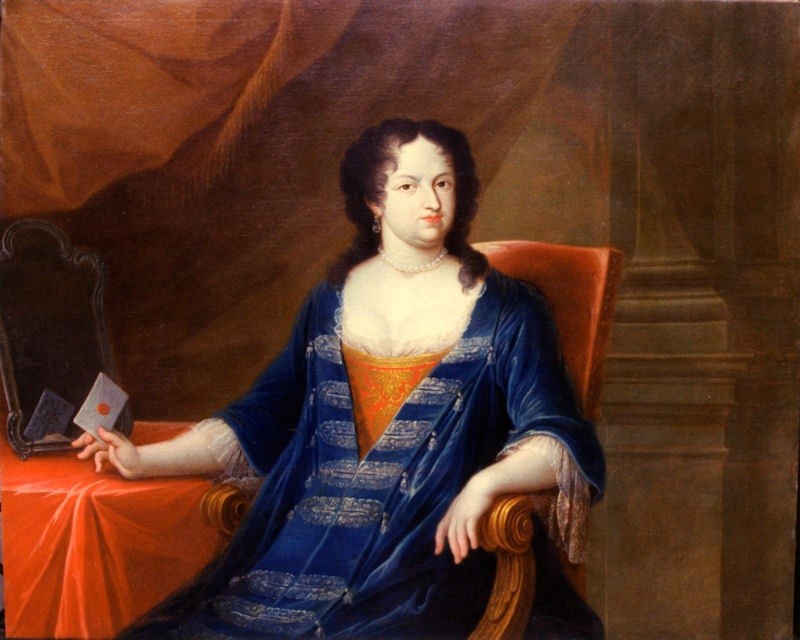Zamoyska Anna Franciszka, née Gnińska
Zamoyska Anna Franciszka, née Gnińska (1653-1704), wife of the Grand Treasurer of the Crown and the steward of Zamość
Parents: Dorota Jaskólska and Jan Gniński
Siblings:
- Jan Gniński, married with Teresa Potocka;
- Jan Chryzostom Gniński (abbot);
- Władysław Gniński;
- Dorota Gnińska (nun)
Husband: Marcin Zdzisław Zamoyski (d. V 1689),
Children:
– Tomasz Józef (1678-1725), 1st wife Teresa nee Potocka 1v. Gnińska, 2nd wife Antonina Zahorowska (zm. 1729), (her 1st husband Marcjan Wołłowicz)
– Jan Franciszek (d. 1692?)
– Michał Zdzisław (1679-1735),1st wife Anna Działyńska; 2nd wife Katarzyna Wiśniowiecka
– Marcin Leopold (1681-1718), married with Konstancja Podbereska (d. 1725),
– Marianna Teresa, married with Jan Stanisław Dzieduszycki
Anna Franciszka and Marcin Zdzisław Zamoyski resided mainly in Zamość, taking care of the development of the Zamość fortress. Zamoyska often visited the royal court of Maria Kazimiera and John III Sobieski, because of the high offices held first by her father Jan Gniński, Vice-Chancellor of the Crown, and later by Marcin Zdzisław, who was the Treasurer of the Crown and often accompanied the king. Zamoyski’s premature death made it necessary for Anna Franciszka to take over the entire estate and the lands of the Zamość fideicommissum (pol. ordynacja) and the fortress itself, which required many diplomatic efforts in the regional dietines (pol. sejmiki) and the royal court.
The court:
Anna Franciszka had a well-organized court, because from the beginning of their marriage Zamoyski included his wife in the supervision of the economic affairs of his estates. After his death, she took over a significant part of his servants and clients. The income from the Zamość inheritance and her private property in Pomerania and the Sandomierz Voivodeship allowed her estate to function efficiently, although the she did not avoid financial problems.
She was considered by her contemporaries to be a “high-minded” person with a superb political sense, extensive relations and mediation possibilities.
See also:
„Awizów przy naszym dworze bardzo jest mało”. Ks. Tomasz Perkowicz SJ (1652–1720) jako korespondent Anny Franciszki Zamoyskiej, podskarbiny koronnej. Studium z dziejów obiegu informacji w czasach saskich, „Annales Universitatis Paedagogicae Cracoviensis Studia ad Bibliothecarum Scientiam Pertinentia”, Folia 322, 18 (2020), s. 14-31. LINK
Dobrodziejki i klienci. Specyfika patronatu kobiecego i relacji klientalnych w czasach saskich, Wydawnictwo Muzeum Pałacu Króla Jana III w Wilanowie, Warszawa 2020.
Popiołek, U. Kicińska, Panie Zamoyskie: Anna Franciszka z Gnińskich, Teresa z Potockich i Urszula z Kalińskich – okruchy biografii w świetle korespondencji i aktów ostatniej woli, „Kwartalnik Historii Kultury Materialnej”, 2017, T. 65, nr 1, s. 19-38. LINK
 Women's noble court in the Polish-Lithuanian Commonwealth in the Saxon times. Structure, people, culture, functions
Women's noble court in the Polish-Lithuanian Commonwealth in the Saxon times. Structure, people, culture, functions

